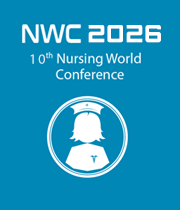Title : Leveraging technology to transform care at Mayo clinic
Abstract:
The Mayo Clinic Department of Nursing (DoN) has implemented a strategic framework for implementing technology and Generative AI (Gen AI) to augment and support nurses and clinical staff. Examples of this include implementation of Macros in the inpatient setting easing documentation burden, In-Basket Augmented Response Technology (ART) which is a Gen AI tool to ease administrative and cognitive burden in the ambulatory care setting and we are leveraging Gen AI capabilities to reimagine care planning and documentation. This strategic framework is designed to implement new technology, Gen AI and automation to shape the future of nursing practice and includes these four principles:
- For nurses, by nurses: Front-line nursing engagement in initial feedback and rollout strategies, with nursing leadership engaged in project approval and oversight.
- Leveraging technology: Augmenting and supporting nurses and nursing staff with tools that allow them to focus on patient care.
- Human in the Loop: Ensuring that nurses determine what to use and what goes in the electronic record as expanded on above.
- Team sport: Leveraging teamwork from multiple teams across Mayo Clinic to transform clinical practice together.
A case study on the Mayo Clinic Department of Nursing strategic framework for implementing Gen AI: The In-Basket Augmented Response Technology (ART). ART was the first use case for nurses delivering direct patient care using Generative AI and the first Mayo Clinic enterprise-wide deployment of AI in patient care. This care delivery transformation uses natural language processing to interpret patient inquiries and generate draft replies, streamlining communication and ensuring high-quality interactions. The design strategy engaged direct-care nursing staff and informaticists for feedback, development, and rollout, with leadership providing oversight. This approach tailored ART to meet users’ needs. Employing a “human in the loop” model, RNs, LPNs, and non-licensed delegates transitioned from generating to reviewing and authenticating messages, enhancing workflow and reducing cognitive burden without altering clinical judgment or practice scope. Implemented enterprise-wide in June 2024, ART now supports approximately 14,000 staff. Results show patients receive responses 89 minutes faster when staff start with an ART draft, with a 5-second reduction in message drafting time. A qualitative review confirmed ART-generated messages are empathetic, appropriately detailed, and at the right reading level. This innovative approach enhances resource efficiency and patient satisfaction, marking a significant step forward in healthcare operations. Keys to success include nursing-led implementation and nursing/clinical informatics support, which increases trust and buy-in. We ensured the right use case, right staff, right time, right clinical workflows and for the right reason. Some examples of successfully leveraging technology to transform care at Mayo Clinic include:
- Implementation of Flowsheet Macros in the inpatient setting.
- Implementation of the Gen AI ART tool to decrease cognitive and administrative burden related to in-basket messages in the ambulatory setting.
- Ongoing development of Gen AI to reimagine how we develop, implement, and document patient-centered care plans for hospitalized patients.



